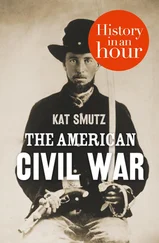The lonely little boy had rickets. This childhood illness was a dominant factor in the development of his personality. The victims of rickets suffer low height and weight, and painful decayed teeth. The spine and breastbone are affected, long bones are shortened and deformed, the ligaments are loose, and fractures are common. Rickets gives bow legs and a pigeon chest, visible deformities. Rickets may also have caused lowered resistance to other diseases, including measles, diarrhoea and whooping cough. But perhaps most significantly, modern studies of rickets suggest that it affects the personality, making for apathy and irritability, and this was noted in Charles’s case. His guardian wrote to James, saying that ‘the great weakness of his body, after so long and heavy sickness, is much supplied by the might and strength of his spirit and mind’ – which might be a diplomatic way of calling the small duke a headstrong child. A toddler in pain is a difficult toddler.
Unfortunately, Charles was not especially lucky in his parents’ response to his illness. If we compare it with that of Buckinghamshire gentleman Ralph Verney, we can see that the royal family were not only careless but callous. Mary Verney wrote of her son: ‘for Jack his legs are most miserable, crooked as ever I saw any child’s, and yet thank God he goes very strongly, and is very straight in his body as any child can bee; and is a very fine child in all but his legs’ … And she too blamed diet. ‘Truly I think it would be much finer if we had him in ordering, for they let him eat anything he has a mind to, and he keeps a very ill diet.’ Ralph Verney’s response was anxious and sympathetic: ‘truly the crookedness of his legs grieves my very heart, ask some advice about it at London, but do not tamper with him’. What he meant by this is dismally clear. When Charles arrived in London on the heels of Atkins’s report, fresh stories of his illness flew about, and those eager to act as guardians to him melted away. ‘There were many great ladies suitors for the keeping of the duke; but when they did see how weak a child he was, and not likely to live, their hearts were down, and none of them was desirous to take charge of him.’ Kind Richard Carey took Charles on, though he reported that ‘he was not able to go, nor scant stand alone, he was so weak in his joints, and especially his ankles, insomuch as many feared they were out of joint’. Carey’s first move was to surround Charles with his own servants; another change of personnel for the little boy. Even more disturbing is his account of his wife’s struggles with James I’s plans, as Richard reported:
Many a battle my wife had with the King, but she still prevailed. The King was desirous that the string under his tongue should be cut, for he was so long beginning to speak as he [the king] thought he would never have spoke. Then he [the king] would have him put in iron boots, to strengthen his sinews and joints, but my wife protested so much against them both, as she got the victory, and the King was fain to yield.
These cruel treatments, contested by Charles’s new foster-mother, may have had their origins in James’s own separation from his mother and his own lack of security. Mary Queen of Scots fled to England without James before his first birthday, leaving him with foster-parents. James himself did not walk until he was about five, and like his son he too had childhood rickets. Also like his son, he compensated for his difficulty in walking by taking up riding and then hunting with especial vigour. When James was around four, he was moved from the woman’s world of the nursery to the schoolroom; this was three years earlier than normal, and it reflected his status as king, but it was hard on him. He loved books, but his tutor George Buchanan was a hard man who hated Catholics, and Mary Queen of Scots most of all. James grew up with his ears ringing with stories of his mother’s wickedness. Buchanan thought she was a witch, a whore and a murderer. On one occasion, he beat the king severely. James may also have been alarmed at seeing his own disabilities reflected in his son. James had very noticeable physical problems: his tongue was too large for his mouth, which made him dribble, and he had only imperfect control over bodily functions and a profound dislike of bathing. When thwarted, he would fling himself furiously about, sobbing or screaming, as his son did.
Historians have tended to portray Charles’s rickets as shortlived, but this may betray the influence of Stuart propaganda. Richard Carey was afterwards keen to tell the world that he had performed a miracle cure. ‘Beyond all men’s expectations so blessed the duke with health and strength under my wife’s charge, as he grew better and better every day.’ Royal astrologer William Lilly said Charles overcame his physical weakness by running and riding and hunting, and that his success made him stubborn in endeavour. Similarly, Philip Warwick reported that ‘though born weakly yet came [he] through temperance and exercise to have as firm and strong a body as that of most persons I ever knew’. And all his life he walked breathlessly fast. But on 6 January 1605, when Charles was created Duke of York, all his robes and other vestments had to be carried by an attendant gentleman, and Charles himself was held in the arms of the Lord High Admiral, the Earl of Nottingham. On 15 September 1608 he was too weak to go to a christening, and it was said that he was ‘exceedingly feeble in his lower parts, his legs growing not erect but repandous [crooked] and embowed, whereas he was unapt for exercises of activity’. As late as 1610 his movements were clumsy, and his part in a masque had to be specially contrived to hide his legs – a circle of children surrounded him as he danced. Finally, Charles’s father and his son, the future Charles II, were both tall, but Charles remained small, further evidence of the severity of his rickets. His brittle bones impeded his growth severely, so that he only reached 5’ 4”, or in other accounts 4’ 11”. (5’ 4” is based on a surviving suit of armour.) The Court portrait painter, Van Dyck, used devices such as a flight of steps, the presence of a dwarf, and a raised throne to make Charles look bigger. In the case of the mounted figure of Charles created by Hubert le Sueur the sculptor was explicitly told to make the figure six feet in height. By contrast, both his older siblings Henry and Elizabeth were relatively tall – Henry was 5’ 8” at the age of seventeen – and also healthy.
The disparity led to rivalry, and James made matters worse by telling Henry that he would leave the crown to Charles if Henry did not work harder. This sort of cruelty, together with the characteristically violent and competitive early modern boys’ culture, led Henry to bully his smaller, weaker, less capable brother, and to taunt him, explicitly, about his disability. One day, as the two were waiting with a group of bishops and courtiers for the king to appear, Henry snatched the Archbishop of Canterbury’s hat and put it on Charles, saying that when he was king he would make Charles primate, since he was swot and toady enough for the job and the long robes would hide his ugly legs. Charles had to be dragged away, screaming with rage. Like many a victim of bullying, Charles tried to win his brother over by extreme submissiveness: ‘Sweet, sweet brother,’ he wrote, desperately, when he was nine, ‘I will give everything I have to you, both horses, and my books, and my pieces [guns], and my crossbow, or anything you would have. Good brother love me … ’ The pathos of this letter can scarcely be exaggerated. In late 1612, however, Henry was dead, aged eighteen. He died of typhoid fever after a hard game of tennis. His last request was for his sister Elizabeth to visit his bedside; there was no mention of his brother. Diarist and MP Simonds D’Ewes recorded that ‘Charles duke of York was so young and sickly as the thought of their enjoying him [as king] did nothing at all to alienate or mollify the people’s mourning’.
Читать дальше












